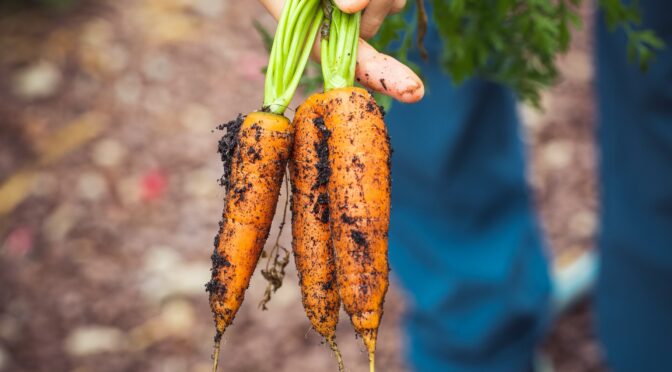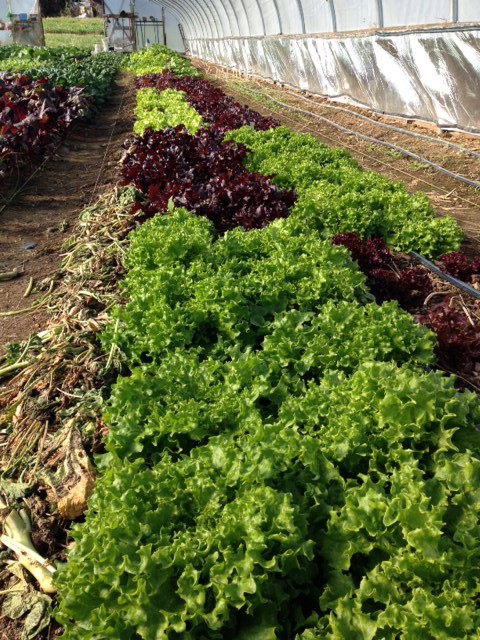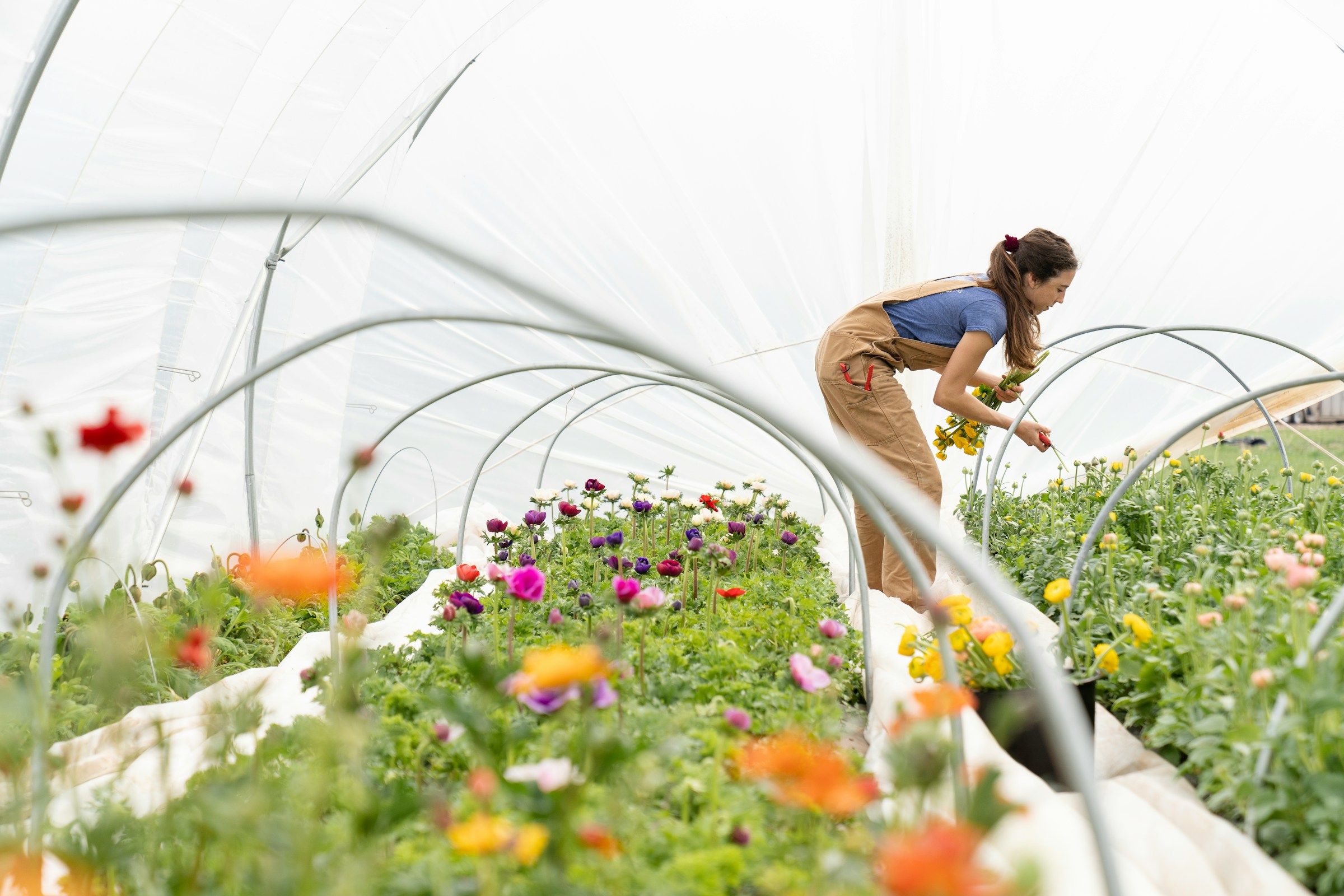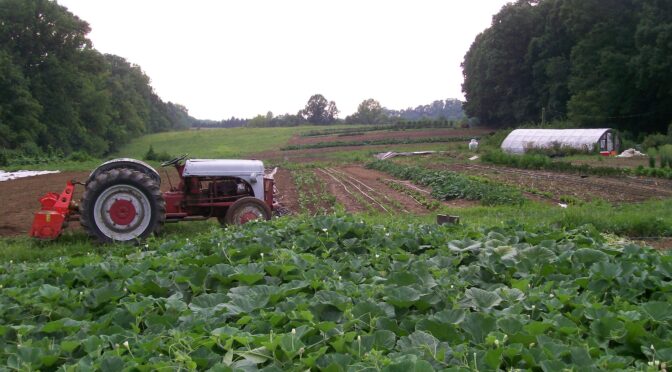You’ll find carrots on nearly any guide to fall gardening or storage crops. When managed, harvested, and stored correctly, carrots can have a great storage life, staying cool and crisp for months. Enjoy carrots well into the winter with these harvest and storage tips.
Best Storage Carrots
While you can store any carrot, not all varieties are well suited to long-term storage. Some varieties were bred with long-term storage in mind. At SESE, we carry a few heirlooms that were specifically bred for root cellar storage at a time when most people still relied on homegrown produce. If you want to store carrots for a long period, we recommend Danvers 126, Oxheart, Yellowstone, or Purple Dragon.

When to Harvest Carrots
Small carrots are often ideal for salads and fresh eating, but you want well-developed carrots for storage. The tips should be starting to fill out and become more blunt. It is essential to get them seeded on time. Using shade cloth to cool the soil can help you get them growing even if it’s still hot.
Plan and plant so that you will be able to harvest fully developed carrots around your first frost date. Before harvesting your bed, pull a few carrots to check on their size and flavor, as days to maturity can vary with growing conditions. Fall brings shorter day lengths, so sometimes carrots that normally take 70 days to reach maturity could take as much as 100 days.
Fall storage carrots are often tastiest when harvested after a few light frosts, but heavy frosts can damage any exposed shoulders. According to the National Weather Service, light frosts occur when temperatures dip to around 34°F (-1.1°C), and hard frosts occur when temperatures dip below 28°F (-2.2°C).
Watch the forecasts and try to hit your ideal storage window. Pull them before a hard frost when they’re still easy to dig.
Harvest & Preparation
Stop watering a few days before harvesting to let the soil dry out a bit. Moist soil is fine; you just don’t want to deal with overly wet soil.
If possible, harvest your carrots on a cool, cloudy fall day. The hot sun hitting your roots as you harvest them can shorten their storage life.
To avoid breaking your carrots, especially in heavy clay soil, gently lift them from the bed with a broad fork or garden fork.
Gently shake or brush off any excess dirt.
Cut the green tops off about 1/4 to 1/2 inch above the shoulders of each carrot.
Avoid cutting root hairs or trimming the roots, as cuts can cause decay.
Set aside any cracked or damaged roots for immediate use and organize roots by size.

How to Store Carrots
Before storing your carrots, you can wash them if desired. They must be handled gently to avoid any damage. If you decide to wash them, you must also allow them to air dry before storage. Washing ahead of time means they’re ready to go when you need them, but it isn’t required.
Carrots can be stored for several months as long as they are mature, undamaged roots that you keep in the proper conditions. Ideal storage conditions include a temperature range of 32–38°F (0–3°C) and a relative humidity of 98%. This can be tough to achieve on a home scale but the closer you get, the longer your carrots will keep.
Smaller roots tend to start rotting more quickly, so it’s best to roughly organize your carrots by size and use up the smallest first. Check all your carrots every one to two weeks and remove and use or compost any that are starting to show signs of decay.
Storing Carrots in the Fridge
You can store carrots in the fridge if you’re working on a small scale. Place them in plastic bags in single layers and lay them in your crisper drawer.
Storing Carrots in a Basement or Root Cellar
A root cellar or basement is a traditional option, offering high humidity and cool temperatures. To store your carrots in a cellar, you’ll need sand and a container. This method allows you to store more carrots than in the fridge.
When finished, your containers will be extremely heavy, so it’s best to put them in place first, especially if they’re large. Plastic totes or wax-lined cardboard boxes work well for this.
Place a layer of moist sand in your container, followed by a single layer of carrots. Then, cover the carrots with a layer of sand, repeating this process until your container is full and you have a layer of moist sand over the top.
Storing Carrots in the Ground
Many oldtimers also left their carrots in the ground and you can do the same. Keep in mind that if temperatures are still warm in your area, carrots can continue to mature and become woody, so this may not work well everywhere.
In cooler areas, your carrots may be fine for several months. We recommend covering the tops of the carrots with a thick layer.
In areas with cold winters where the ground freezes, cover carrots with 12 to 18 inches of mulch like old hay or leaves. Push it aside to harvest. Row cover or low tunnels over the mulched-in carrot beds can offer additional protection.
Keeping carrots in the ground all winter gives you a fresh supply of produce and can allow you to harvest seed next spring.
Canning or Freezing Carrots
A final option is to can or blanch and freeze your carrots. It’s not the same as having fresh carrots, but crisp storage carrots generally hold their texture and flavor quite well in both the freezing and canning process.
Keep in mind that carrots are a low-acid food, so to water bath can them, you’ll need to pickle them. If you want to can plain carrots, you’ll need to use a pressure canner. The National Center for Home Food Preservation offers guidance on pressure canning carrots.
Carrots are an excellent storage crop that can last for months when cared for properly. Handle your carrots with care and follow these tips to enjoy a steady supply of fresh carrots this winter.







